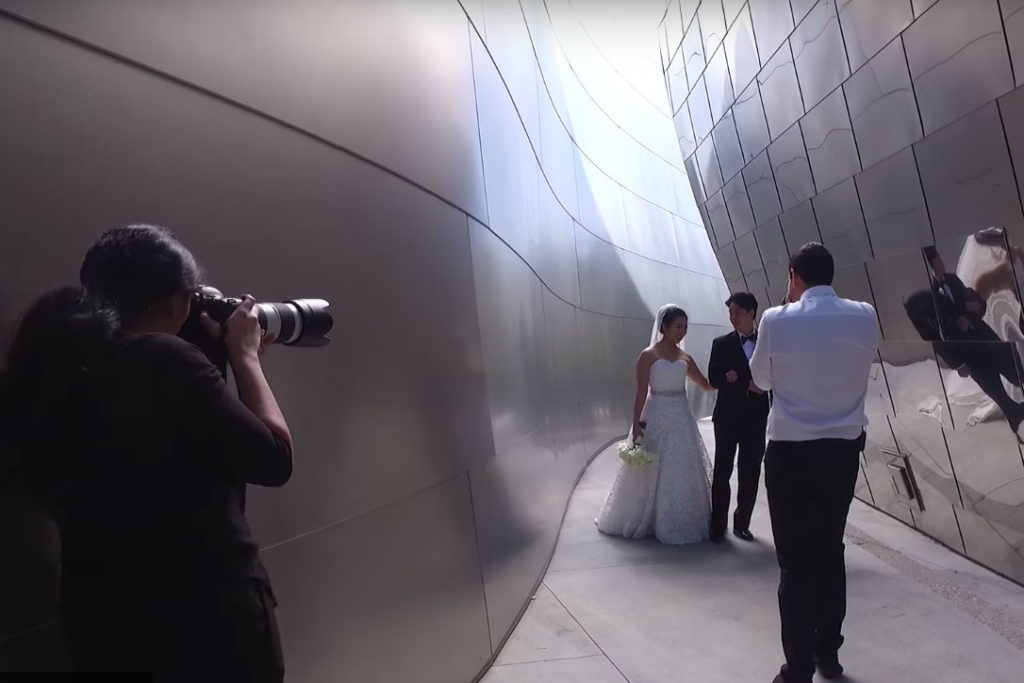
Do I Need a Second Photographer at My Wedding?
If you’re planning your wedding, you might be wondering, “Do I need a second photographer at my wedding?” The short answer is most of the time, but it depends on a few factors. In this article, we’ll share our insider thoughts as wedding photographers and share with you the important factors to consider when making this decision.
Factor 1: The Wedding Photographer’s Style and Process
One of the biggest factors is the photographer’s style and process. Some photographers feel perfectly comfortable moving back and forth between the bride’s room and the groom’s room during prep, covering all angles of a wedding ceremony, and handling all aspect of the way without a second photographer. On the other hand, some studios prefer a 2 or 3 photographer approach to divide the responsibilities, cover more angles, and have a backup shot of important moments. So long as you’ve properly analyzed your photographer, as we cover in our article on how to choose a wedding photographer, you should trust in his or her process.
Factor 2: The Size and Location of Your Wedding
If you’re having a small, intimate wedding with only a handful of guests, such as an elopement ceremony, then you probably don’t need a second photographer. However, if you’re having a large wedding with hundreds of guests, then hiring a second photographer is important for covering all of the angles and moments.
Another factor to consider is the location of your wedding. If you’re getting married in a large church or venue, then you’ll likely need a second photographer to help capture all of the guests and details. However, if you’re having a backyard wedding in a smaller location, one photographer might be enough.

Factor 3: The Schedule
If you have multiple things going on at one time, then you’ll need multiple photographers. For example, during many Sikh and Hindu Weddings, the Baraat (groom’s procession) happens at the same time that ceremony details are ready to be photographed. In addition, that time is often the window during which the bride is fully dressed and ready for portraits. In these types of weddings, multiple shooters are absolutely needed.
However, if your day doesn’t have multiple events at once, you can potentially plan ahead and schedule enough time for a single photographer to cover everything. For example, you might be able to have one photographer only if the bride prep and groom prep locations are close to each other and the schedule gives the photographer enough time to travel between the two rooms. However, unexpected delays could be more difficult to make up with a single photographer.
Factor 4: Your Expectations

Having one photographer has its obvious limitations. These are important to understand when booking a single photographer package so that you’re not disappointed in the final set of images. Here are a few to keep in mind:
- Only One Angle – You only have one angle of important moments like the first look, first kiss, first dance. A solo photographer can zoom in and out but movement will be limited during these quick moments. This is less of a limitation for moments that last longer like the first dance, speeches, and posed portraits.
- Only One Place at A Time – As we mentioned before, with one photographer, be sure to schedule the time and location of the events from the day so that the photographer can reasonably cover everything.
- Potential Missed Moments – Regardless of how well planned a wedding is, there is always the potential for things to go wrong. Spontaneous moments can catch a photographer off guard, guests can block a photographer’s view, etc. Multiple photographers decreases the chances of missing moments.
- Candids and Emotion – In general, a good photo team will have clearly defined roles so that each photographer is focusing on a different aspect or angle. For example, the lead photographer could be focused on the main action during a wedding ceremony while the second and third photographers focus on crowd reactions and emotion. A solo photographer may have a tough time capturing both by themselves.
- Limited Gear/Lighting – A single photographer can generally carry less gear than a photographer with an assistant and/or second shooter. This might lead to a simplified, lighter gear kit that might exclude things like lighting gear or tripods. This may or may not be an issue depending on the photographer’s style. Again, trust your photographer’s recommendations and strongly consider the number of photographers he or she recommends.
Conclusion
There is no right or wrong answer when it comes to deciding whether or not you need a second photographer at your wedding. Ultimately, it depends on your own personal preferences, the photographer’s style, the wedding schedule, and your expectations. We hope this article provides you with the facts you need to make an informed decision.



